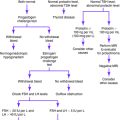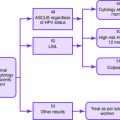Chapter 43 WEIGHT LOSS
Clinically significant weight loss can be defined as the loss of 10 pounds (4.5 kg) or more than 5% of the usual body weight over 6 to 12 months, especially when the weight loss is progressive. Weight loss greater than 10% in that amount of time represents protein-energy malnutrition, which is associated with impaired physiologic function, such as impaired cell-mediated and humoral immunity. Weight loss greater than 20% in the same time represents severe protein-energy malnutrition and is associated with organ dysfunction.
Medications Associated with Weight Loss
Causes of Weight Loss
Key Historical Features
✓ Determination of whether the patient predominantly is not hungry, is nauseated after meals, has difficulty eating or swallowing, or has functional or social problems that may be interfering with the ability to obtain or enjoy food
✓ Presence of indigestion or reflux symptoms
✓ For geriatric patients, interviewing a knowledgeable caretaker
✓ Discussion of functional and mental status
✓ Medical history, especially history of previous gastrointestinal conditions
✓ Surgical history, especially history of previous gastrointestinal surgery
Key Physical Findings
✓ Height, weight, and body mass index
✓ Examination of the oral cavity
✓ Mental status examination and formal cognitive testing with an instrument such as the Folstein Mini-Mental State Examination
✓ Evaluation for depression with an instrument such as the PHQ-9 (nine-item depression scale of the Patient Health Questionnaire) or the Geriatric Depression Scale
✓ Examination of the nervous system
✓ Functional assessment, including evaluations of sight, hearing, gait, and self-care ability (tools include the Katz scale of activities of daily living and the Lawton scale of instrumental activities of daily living)
Suggested Work-Up
| Complete blood cell count (CBC) | To evaluate for infection, anemia, or lymphoproliferative disorder |
| Chemistry panel | To evaluate for diabetes mellitus, dehydration, or renal dysfunction |
| Thyroid-stimulating hormone measurement | To evaluate for hypothyroidism or hyperthyroidism |
| Urinalysis | To evaluate for infection, renal dysfunction, or dehydration |
| Fecal occult blood test | To screen for gastrointestinal malignancy |
| Chest radiography | To evaluate for infection, malignancy, or cardiopulmonary disease |
| Upper endoscopy or upper gastrointestinal series | Should be considered in patients with anorexia, absence of other symptoms, and persistent weight loss, because peptic ulcer disease and gastroesophageal reflux may be clinically silent |
Additional Work-Up
| Measurement of erythrocyte sedimentation rate | To evaluate for inflammatory processes |
| Blood culture | If infection is suspected |
| Purified protein derivative (PPD) test | If tuberculosis is suspected |
| HIV test | If risk factors are present or if HIV infection is suspected |
| Rapid plasma reagin (RPR) | If risk factors for syphilis are present or if physical findings suggest the presence of syphilis infection |
| Growth hormone measurement | To evaluate for endocrine deficiency |
| Sigmoidoscopy or colonoscopy | If a colonic lesion is suspected |
| Computed tomographic (CT) scanning | Low yield but possibly helpful in diagnosing malignancy, abscess, chronic pancreatitis, intestinal complications, and so forth |
| Measurement of serum prealbumin, transferrin, and albumin | Not useful in determining the cause of weight loss, but possibly useful in guiding supplement selection |
Alibhai SM, Greenwood C, Payette H. An approach to the management of unintentional weight loss in elderly people. CMAJ. 2005;172:773-780.
Bouras EP, Lange SM, Scolapio JS. Rational approach to patients with unintentional weight loss. Mayo Clin Proc. 2001;76:923-929.
Gazewood JD, Mehr DR. Diagnosis and management of weight loss in the elderly. J Fam Pract. 1998;47:19-25.
Huffman GB. Evaluating and treating unintentional weight loss in the elderly. Am Fam Physician. 2002;65:640-650.
Robertson RG, Montagnini M. Geriatric failure to thrive. Am Fam Physician. 2004;70:343-350.




